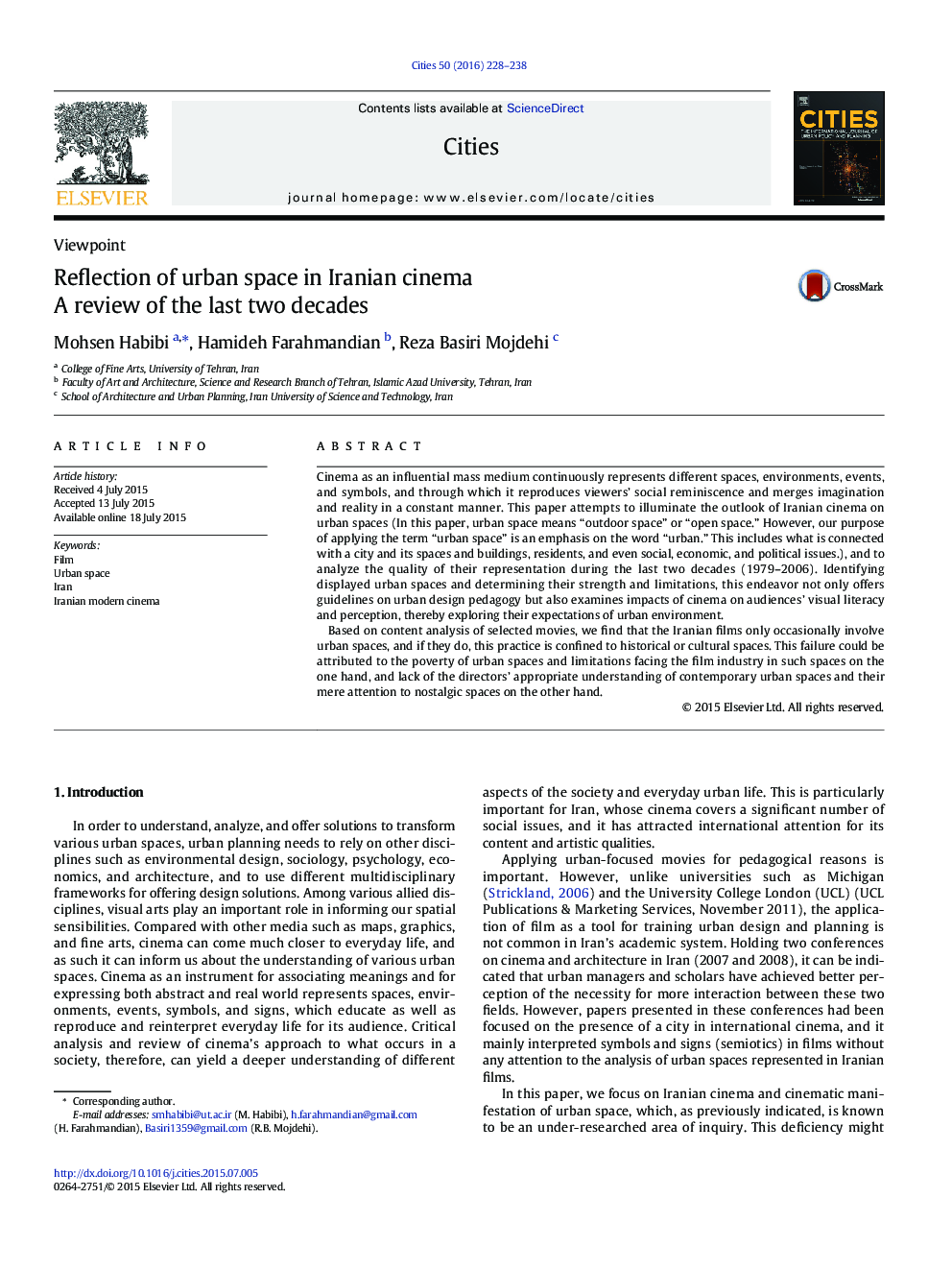| کد مقاله | کد نشریه | سال انتشار | مقاله انگلیسی | نسخه تمام متن |
|---|---|---|---|---|
| 1008216 | 1482346 | 2016 | 11 صفحه PDF | دانلود رایگان |
• Urban planning and design as a space-oriented knowledge can be highly connected to sequences of urban spaces in films.
• This paper attempts to illuminate the outlook of Iranian cinema on urban spaces, and to analyze the quality of their representation in films during the last two decades.
• To analyze urban spaces represented in sequences of Iranian films, a number of films from Iranian narrative cinema were reviewed and analyzed by using qualitative strategies and techniques such as content analysis.
• Urban spaces in Iranian films are not considered as place for social interactions, and they work merely as a way for passage.
• We can suggest the use of cinema and spatial representation of urban spaces on reaching a clear understanding of the significant characteristics of urban spaces and architecture, and their deployment in the urban planning and design in the world, particularly in Iran.
Cinema as an influential mass medium continuously represents different spaces, environments, events, and symbols, and through which it reproduces viewers’ social reminiscence and merges imagination and reality in a constant manner. This paper attempts to illuminate the outlook of Iranian cinema on urban spaces (In this paper, urban space means “outdoor space” or “open space.” However, our purpose of applying the term “urban space” is an emphasis on the word “urban.” This includes what is connected with a city and its spaces and buildings, residents, and even social, economic, and political issues.), and to analyze the quality of their representation during the last two decades (1979–2006). Identifying displayed urban spaces and determining their strength and limitations, this endeavor not only offers guidelines on urban design pedagogy but also examines impacts of cinema on audiences’ visual literacy and perception, thereby exploring their expectations of urban environment.Based on content analysis of selected movies, we find that the Iranian films only occasionally involve urban spaces, and if they do, this practice is confined to historical or cultural spaces. This failure could be attributed to the poverty of urban spaces and limitations facing the film industry in such spaces on the one hand, and lack of the directors’ appropriate understanding of contemporary urban spaces and their mere attention to nostalgic spaces on the other hand.
Journal: Cities - Volume 50, February 2016, Pages 228–238
